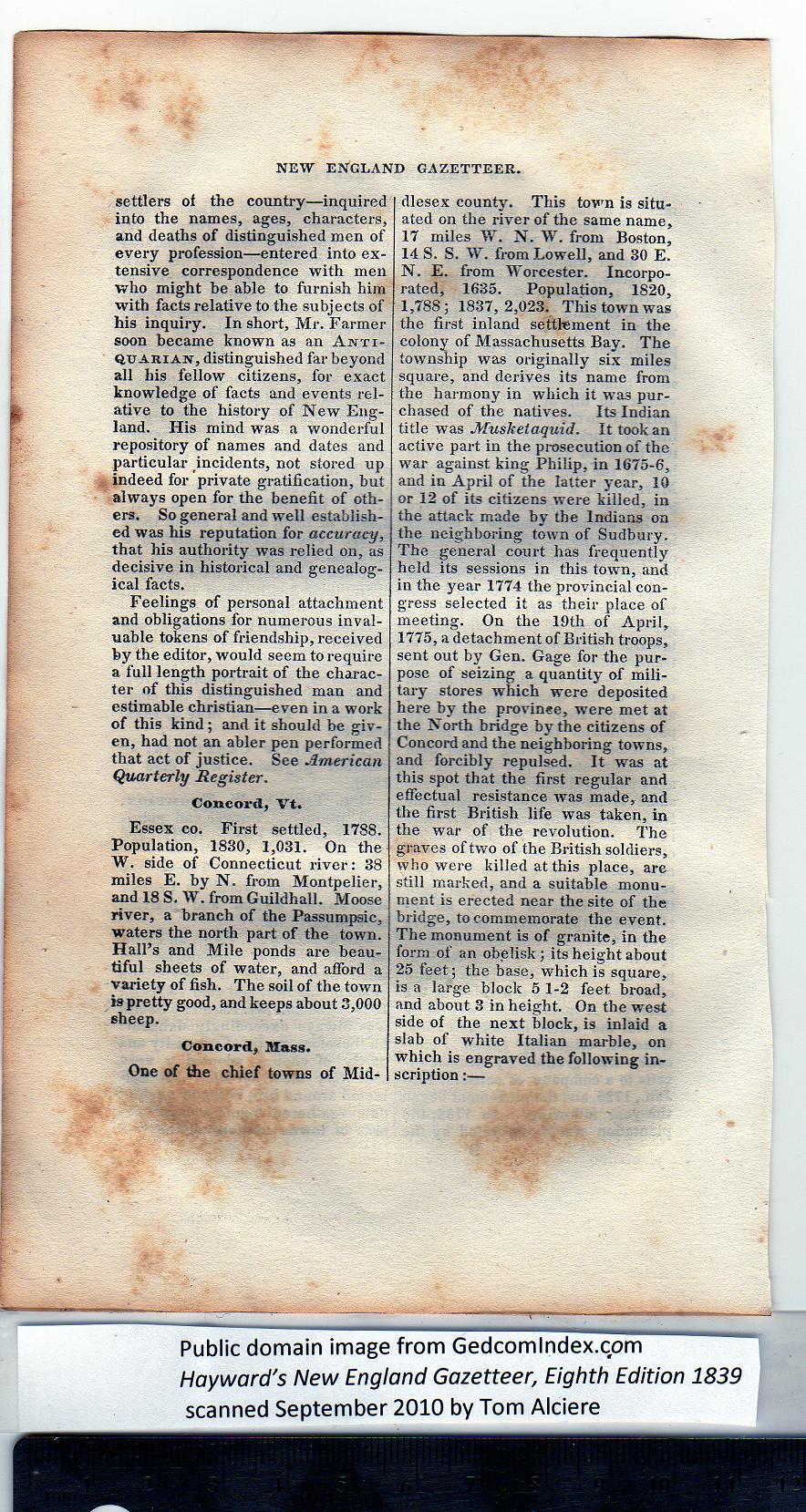|
settlers ol the country—inquired
into the names, ages, characters,
and deaths of distinguished men of
every profession—entered into ex-
tensive correspondence with men
who might be able to furnish him
with facts relative to the subjects of
his inquiry. In short, Mr. Farmer
soon became known as an Anti-
quarian, distinguished far beyond
all his fellow citizens, for exact
knowledge of facts and events rel-
ative to the history of New Eng-
land. His mind was a wonderful
repository of names and dates and
particular incidents, not stored up
indeed for private gratification, but
always open for the benefit of oth-
ers. So general and well establish-
ed was his reputation for accuracy,
that his authority was relied on, as
decisive in historical and genealog-
ical facts.
Feelings of personal attachment
and obligations for numerous inval-
uable tokens of friendship, received
by the editor, would seem to require
a full length portrait of the charac-
ter of this distinguished man and
estimable Christian—even in a work
of this kind; and it should be giv-
en, had not an abler pen performed
that act of justice. See American
Quarterly Register.
Concord, Vt.
Essex co. First settled, 1788.
Population, 1830, 1,031. On the
W. side of Connecticut river: 38
miles E. by N. from Montpelier,
and 18 S. W. from Guildhall. Moose
river, a branch of the Passumpsic,
waters the north part of the town.
Hall’s and Mile ponds are beau-
tiful sheets of water, and afford a
variety of fish. The soil of the town
19 pretty good, and keeps about 3,000
sheep.
Concord, Mass. |
One of the chief towns of Mid-
dlesex county. This town is situ-
ated on the river of the same name,
17 miles W. N. W. from Boston,
14 S. S. W. from Lowell, and 30 E.
N. E. from Worcester. Incorpo-
rated, 1635. Population, 1820,
1,788; 1837,2,023. This town was
the first inland settlement in the
colony of Massachusetts Bay. The
township was originally six miles
square, and derives its name from
the harmony in which it was pur-
chased of the natives. Its Indian
title was Musketaquid. It took an
active part in the prosecution of the
war against king Philip, in 1675-6,
and in April of the latter year, 10
or 12 of its citizens were killed, in
the attack made by the Indians on
the neighboring town of Sudbury.
The general court has frequently
held its sessions in this town, and
in the year 1774 the provincial con-
gress selected it as their place of
meeting. On the 19th of April,
1775, a detachment of British troops,
sent out by Gen. Gage for the pur-
pose of seizing a quantity of mili-
tary stores which were deposited
here by the province, were met at
the North bridge by the citizens of
Concord and the neighboring towns,
and forcibly repulsed. It was at
this spot that the first regular and
effectual resistance was made, and
the first British life was taken, in
the war of the revolution. The
graves of two of the British soldiers,
who were killed at this place, are
still marked, and a suitable monu-
ment is erected near the site of the
bridge, to commemorate the e vent.
The monument is of granite, in the
form of an obelisk; its height about
25 feet; the base, which is square,
is a large block 5 1-2 feet broad,
and about 3 in height. On the west
side of the next block, is inlaid a
slab of white Italian marhle, on
which is engraved the following in-
scription :— |
